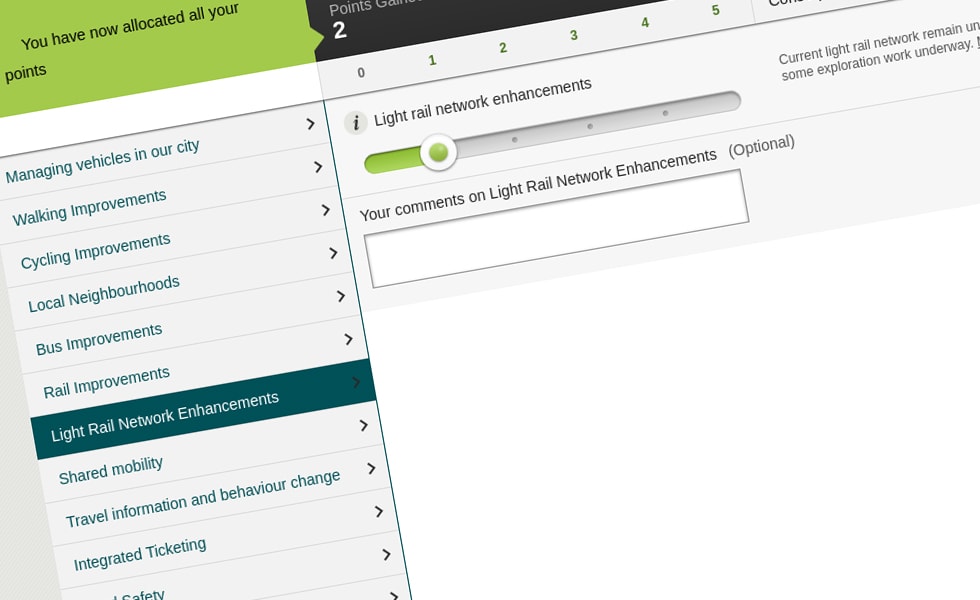Customer story: Glasgow City Council, UK
Transport Priorities Simulator

The butterfly effect
Transport planning is a tricky business. From harnessing data on different journeys, to working within the constraints of existing architecture and infrastructure (which might no longer be fit for purpose), to balancing the preferences of residents with the realities of budgetary constraints, even something as seemingly simple as changing a bus route or putting in a cycle lane can have a ‘butterfly effect’ that echoes across a whole city or ward. It’s a bit like a Jenga tower. Pull out the wrong brick and the whole thing could collapse around your ears.
So when it comes to consulting with residents, it’s tough to ask the right questions. How can you truly demonstrate the complexities involved when presenting options, so your citizens can give informed feedback, without giving them 200 pages of required reading?
Complex decisions made simple
Problems like these are the reason we created Simulator, Delib’s digital prioritisation tool. Its built-in constraints replicate the trade-offs that policy-makers have to balance, enabling residents to try their hand at complex decision-making.It’s been used to harness citizen input on thorny issues like policing priorities, carbon budgets and, yes, transport planning.
Glasgow City Council were consulting on a 10-year transport plan. It covered things like improvements to existing infrastructure as well as changes in technology and travel methods, such as electric cars and greener travel preferences. There were 15 different slider categories, which gave a good overview of all the different elements the council needs to consider.
Glasgow needs to reduce emissions from transport significantly if they are to reach their target of being carbon-neutral by 2030. They’re also committed to connecting those communities without decent transport links to the wider city and who’ve suffered economic and social disadvantage as a result. Simulator helped demonstrate the intricacies of getting the balance right in a way that was easy to understand.
Informed input
Respondents had 30 points to ‘spend’ and did so by moving sliders left or right. Each time they did so they were given a consequence, with the option to read more info if they wished. At every stage they had the option of leaving free-text comments. This embedded information informed at the point of response, meaning that there was absolutely no prior knowledge required on the part of the respondent. What resulted was rich, insightful, informed feedback for the consulting organisation.
Guide: how to engage citizens with transport planning priorities.
Want a real person to walk you through a live demo?
We’re happy to help out. We'll answer all your questions. We won't share your contact details.
Request a Free Demo